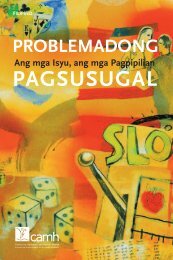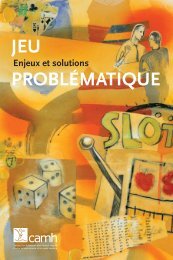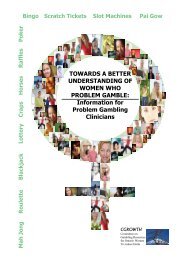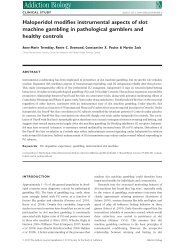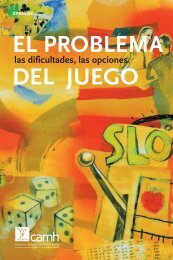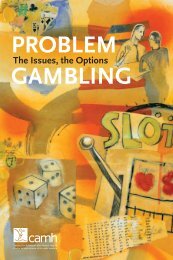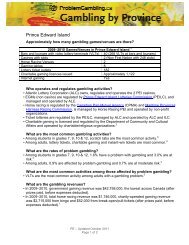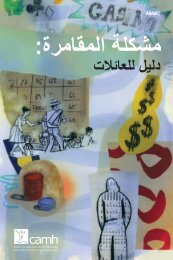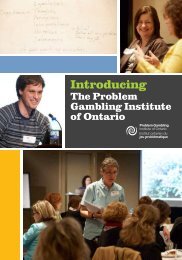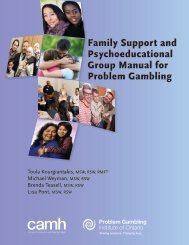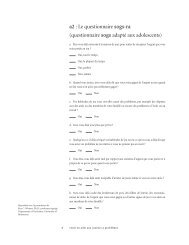Youth Making Choices: Gambling Prevention Program
Youth Making Choices: Gambling Prevention Program
Youth Making Choices: Gambling Prevention Program
You also want an ePaper? Increase the reach of your titles
YUMPU automatically turns print PDFs into web optimized ePapers that Google loves.
Unit 3: ProbabilityA person who experiences a large win gambling may think that theirsuccess is so unlikely that it could not have been chance and may attributetheir win to the concept of luck, prayer, a betting system, or skill. Unusualwins and unusual losses can lead people to distorted beliefs about theirability to win.ConnectionsSmall Groups• There are three small group activities to select. Depending on the amountof time the teacher has available, one or all of the activities may beselected. The lesson activities are:1. Properties of ProbabilityThe Properties of Probability involves a variety of tally chart activities.The more variety in the activities, the greater the increase in studentunderstanding of the concept of probability and house edge. Studentsmust work through each activity for the recommended number oftimes to see long-term outcomes. This activity illustrates severalproperties of probability and house edge. Teacher Resource 1 providesthe instructions and Student Resource 2 provides the tally sheet andworksheet for the students to complete the activities. The activitiesare divided into eight separate sections that must be completed in theorder presented. Sections 1 and 2 look at probability and sections 3 to8 look at house edge.2. RandomnessThe Randomness activity takes a closer look at what randomness isand how it may impact beliefs about chances of winning when involvedin some gambling activities. Teacher Resource 2 and Student Resource3 provide the instructions and handouts.3. Coins, Dice and CardsCoins, Dice and Cards are activities with coins, dice and cards thatteach about probability. Teacher Resource 3, and Students resources4, 5 and 6 are used for this activity.Whole Class Debrief• Students reflect on the results and should demonstrate an understandingof sample size, properties of probability, range or spread of outcomes,uncertainty, feelings about winning or losing in controlled circumstances,randomness, chance of winning and random events.AfL: AnecdotalCommentsConsolidation and Connection> Helping students demonstrate what they have learned> Providing opportunities for consolidation and reflectionIndividual RAFT• The RAFT assignments are differentiated based on student intelligencepreferences. RAFT assignments can be done independently, or inpairs or groups in class or out of class. In all cases students require anunderstanding of the aspects of a RAFT topic, and rubrics need to besupplied for all topic possibilities.<strong>Youth</strong> <strong>Making</strong> <strong>Choices</strong>: <strong>Gambling</strong> <strong>Prevention</strong> <strong>Program</strong>www.Problem<strong>Gambling</strong>.ca3.5




